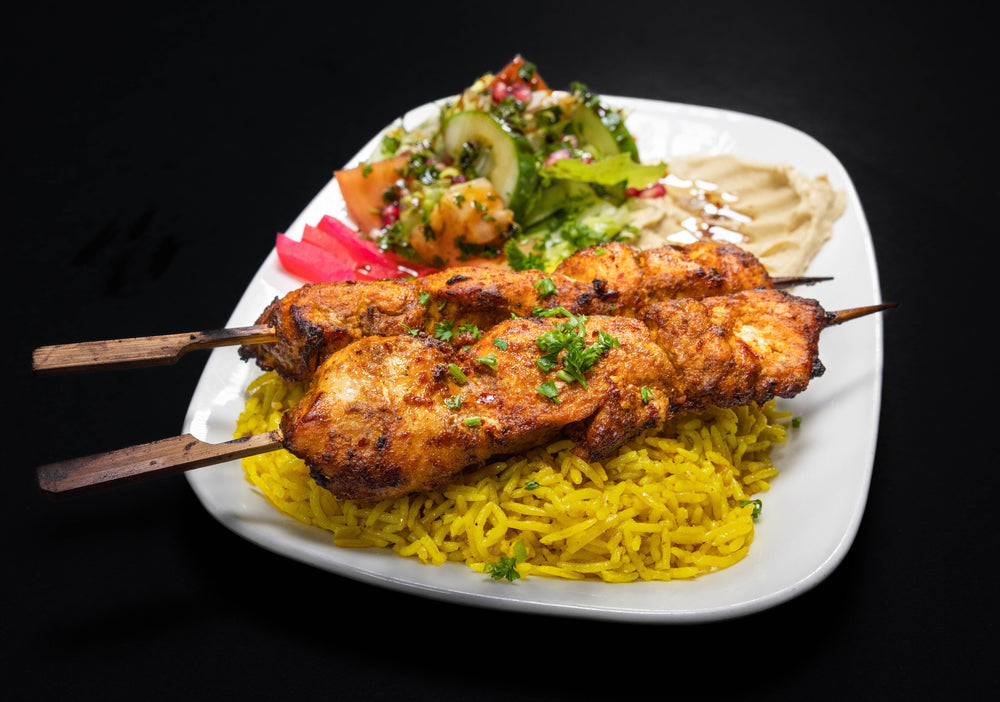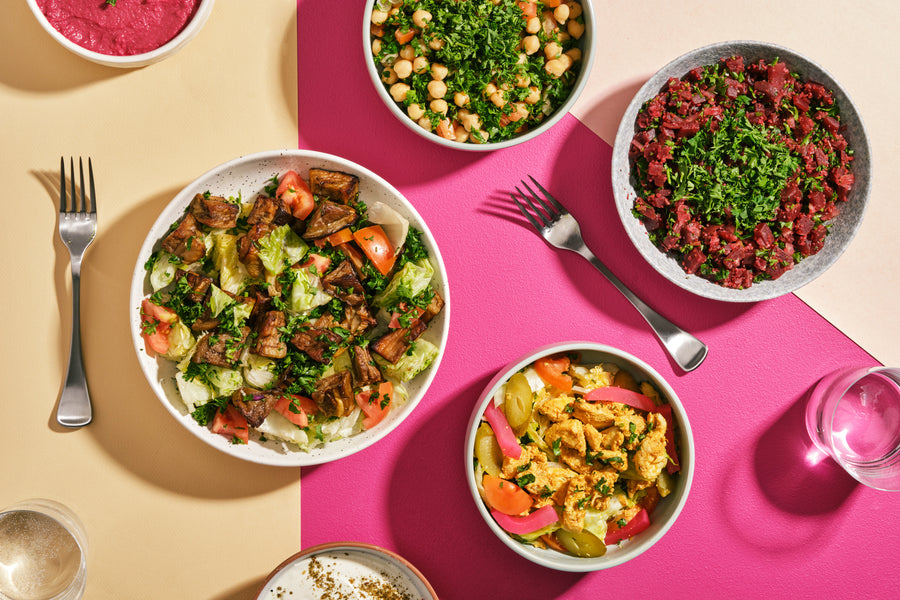All Regarding the Rich Flavors and Traditions of Syrian Food: A Culinary Journey
Syrian food offers a distinct blend of tastes and traditions that reflect its rich social history. With staple ingredients like olive oil and garlic, along with a range of spices, the meals are both diverse and welcoming. From the detailed prep work of kibbeh to the pleasant appeal of baklava, each facet of this cooking landscape exposes deeper stories. As one explores the significance of these flavors, a better understanding of public eating and event arises.
The Essence of Syrian Components
The essence of Syrian components hinges on their rich variety and deep-rooted cultural relevance. Influenced by the nation's different location and background, Syrian food incorporates a large variety of spices, herbs, and fresh produce. Staples such as olive oil, garlic, and lemon supply a foundation, while spices like coriander, cumin, and sumac include deepness and intricacy to dishes.The use of fresh natural herbs, consisting of parsley and mint, highlights the value of seasonal active ingredients. In addition, the area's productive soil returns an abundance of fruits and vegetables, such as pomegranates, tomatoes, and eggplants, which are integral to several dishes. Grains like bulgur and rice create the base of several meals, underscoring the relevance of these components in Syrian society. This mix of tastes reflects not just a culinary practice yet likewise a tapestry of historic impacts, making Syrian ingredients important to comprehending its cuisine's vivid character.

Iconic Dishes of Syrian Food
Syrian cuisine is renowned for its iconic meals that showcase a rich tapestry of appearances and flavors. Standard meze plates provide a range of small recipes that tantalize the taste buds, while hearty main dishes offer enjoyable centerpieces for dishes (Afternoon Tea Vancouver). To complete the experience, an option of scrumptious desserts adds a pleasant note to the cooking journey
Standard Meze Plates

Hearty Key Courses
Passionate main dishes work as the centerpiece of Syrian eating, showcasing a blend of tastes that show the country's abundant culinary practices. Recipes such as kebab hindi, featuring seasoned lamb skewers, and the celebrated mujaddara, a reassuring combination of lentils and rice, highlight using fresh active ingredients and aromatic spices. One more staple is the iconic kibbeh, made from bulgur wheat and minced meat, often served in various types, including baked, fried, or raw. Additionally, the flavors of the land come alive in meals like stuffed vegetables, referred to as mahshi, which are filled up with rice, meat, and herbs. These main dishes not only please cravings however likewise tell stories of family members events and cultural heritage.
Delightful Desserts Choice
A fascinating range of treats defines the wonderful side of Syrian cuisine, supplying an alluring end to any meal. Amongst one of the most renowned confections are baklava, fragile layers of phyllo bread loaded with nuts and drenched in syrup, and maamoul, shortbread-like cookies typically stuffed with days or nuts. Knafeh, a rich dessert made from thin noodle-like bread soaked in syrup and layered with cheese, is a prominent choice, particularly during festive events. In addition, the sweet and great smelling rice pudding, known as roz bil laban, supplies a reassuring surface. These mouth-watering treats not only display the region's cooking competence however likewise show the cultural heritage of Syria, making them cherished treats in both restaurants and homes alike.
Conventional Food Preparation Techniques
Contemporary benefits have affected several cooking techniques, conventional cooking methods continue to be essential to Syrian cuisine. These methods commonly emphasize making use of fresh, seasonal components and concentrate on sluggish food preparation to create abundant tastes. Techniques such as grilling, braising, and cooking are widespread, enabling the all-natural preferences of the active ingredients to beam through.One remarkable strategy is the preparation of kibbeh, a meal made from carefully ground meat and bulgur. It needs experienced hand-rolling into different forms and can be baked, deep-fried, or served raw. Additionally, the art of making bread, especially pita, is central to numerous meals, commonly cooked in a conventional stone oven.Preservation methods like pickling and fermenting also play a crucial duty, enhancing the variety of tastes found in Syrian dishes. These strategies not just reflect the region's agricultural heritage but also cultivate a strong feeling of neighborhood through shared cooking methods.

The Role of Spices in Flavor
Seasonings act as the heart beat of Syrian cuisine, instilling dishes with complicated tastes and fragrant depth. Each seasoning plays an essential role, contributing not only to taste but also to the social heritage of the region. Frequently utilized seasonings include cumin, coriander, and sumac, each offering a special profile that raises traditional recipes. As an example, cumin provides heat and earthiness, while sumac includes a tasty brightness, enhancing the total dish.Syrian cooks frequently blend flavors to produce harmonious profiles, mirroring the elaborate balance of tastes that specify the food. Making use of flavors is not just for seasoning; it likewise offers to protect food and improve its dietary worth. This thoughtful consolidation highlights a deep understanding of the cookeries, where spices come to be important storytellers, communicating the abundant background and diverse influences that identify Syrian gastronomy. important source Ultimately, seasonings are essential in crafting authentic and memorable Syrian meals.
Commemorative Dishes and Joyful Personalizeds
Celebratory dishes in Syrian cuisine are noted by traditional feast meals that mirror the country's abundant cooking heritage. Special events frequently include distinct routines that enhance the communal experience of dining. These customs not just recognize the significance of the occasions yet additionally enhance cultural and domestic bonds.
Traditional Feast Cuisines
When families gather to commemorate substantial celebrations in Syria, traditional banquet recipes take spotlight, showcasing the rich cooking heritage of the area. These events often feature vibrant plates of mezze, including hummus, baba ghanoush, and tabbouleh, which offer as delightful beginners. The main dish normally highlights lamb or hen, marinaded and cooked to excellence, commonly accompanied by aromatic rice pilaf or bulgur. One of one of the most precious dishes is maqlooba, a layered rice meal with veggies and meat, turned upside down prior to serving. Desserts also play a vital role, with baklava and knafeh offering a sweet surface to the meal. Each recipe not just delights the taste but additionally mirrors the deep-rooted practices and communal spirit of Syrian society.
Special Celebration Rituals
Unique celebrations in Syria are noted by rich rituals that link food and celebration, reflecting the social value of public gatherings. Congratulatory dishes commonly consist of conventional meals such as kibbeh, tabbouleh, and numerous barbequed meats, prepared with treatment and shared among friends and family. During spiritual holidays like Eid al-Fitr and Eid al-Adha, families come together to prepare special desserts like maamoul, signifying unity and joy. Wedding events are specifically fancy, including numerous courses and dynamic displays of friendliness. These occasions are not merely concerning food; they include dance, music, and narration, strengthening social bonds and social heritage. With these routines, Syrians commemorate life's turning points, ensuring practices are passed down with generations, improving their cooking landscape.
The Importance of Sharing and Community
Sharing meals is a basic element of Syrian culture, showing the ingrained worths of area and link. In Syria, food is not simply nourishment yet a way of bringing individuals with each other. Households and close friends gather around the table to take pleasure in typical dishes, cultivating bonds and creating enduring memories. This public dining experience highlights friendliness, where hosts most likely to fantastic lengths to ensure every guest really feels invited and nourished.The act of sharing food additionally represents kindness and uniformity, enhancing social connections within neighborhoods and larger neighborhoods. Throughout gatherings, it is typical for people to serve each other, showcasing a spirit of togetherness that transcends individualism. Parties, whether tiny or big, are usually marked by the sharing of dishes, where diverse tastes and dishes collaborated, mirroring the abundant tapestry of Syrian culture. As necessary, the significance of sharing and community in Syrian cuisine is not just a culinary tradition however a crucial social technique.
A Culinary Expedition of Syrian Desserts
Commonly eclipsed by savory recipes, Syrian desserts hold a treasured area in the nation's cooking heritage (Afternoon Tea Vancouver). These confections reflect the area's abundant history, blending tastes and methods from various societies. Typical treats like baklava, with its layers of phyllo pastry, nuts, and honey syrup, display the virtuosity associated with Syrian cooking. Ma'amoul, a shortbread-like cookie loaded with nuts or dates, is often prepared for cheery occasions, symbolizing friendliness and celebration.Another cherished sweet is Knafeh, a pastry saturated in syrup and layered with cheese or lotion, supplying a delightful comparison of structures. Syrians also delight in a range of fruit syrups and preserves, frequently offered with tea or as part of a bigger spread during events. These desserts not only please the taste but likewise function as a bridge between generations, maintaining the practices and tales of Syrian culture through each delicious bite
Regularly Asked Inquiries
What Are the Wellness Benefits of Standard Syrian Foods?
The health and wellness benefits of conventional Syrian foods include abundant nutrients from fresh vegetables, beans, and whole grains. These ingredients promote heart health and wellness, enhance digestion, and supply essential vitamins, adding to overall well-being and a well balanced diet plan.
How Has Syrian Cuisine Progressed Over the Years?
Syrian food has have a peek at this site actually developed substantially, affected by historical profession courses, social exchanges, and regional accessibility of ingredients. Standard meals have actually incorporated modern-day flavors and methods while preserving their abundant heritage, reflecting a diverse cooking landscape.
Exist Vegetarian or Vegan Options in Syrian Food?
Syrian cuisine uses numerous vegan and vegan options, featuring recipes like falafel, tabbouleh, and stuffed grape leaves. These meals highlight the area's abundant agricultural heritage, showcasing fresh vegetables, grains, and aromatic spices in dynamic mixes.
What Beverages Pair Well With Syrian Meals?
When thinking about beverages that match Syrian meals, one may locate that mint pomegranate, tea, and ayran juice enhance the dish's tastes. Furthermore, merlot often pairs well with the seasonings typically found in these cuisines.
How Can I Recreate Syrian Meals in your home?
To recreate Syrian dishes in your home, one should explore authentic dishes, gather conventional ingredients, and use cooking strategies unique to the food. Try out flavors and presentation additionally boosts the total dining experience. Syrian food is renowned for its iconic dishes that display a rich tapestry of flavors and structures. Seasonings serve as the heart beat of Syrian cuisine, infusing recipes with complex flavors and aromatic deepness. Celebratory meals in Syrian food are noted by traditional feast dishes that reflect the nation's abundant culinary heritage. Parties, whether small or big, are typically click for source noted by the sharing of dishes, where diverse tastes and recipes come with each other, showing the abundant tapestry of Syrian society. Syrian food supplies various vegan and vegan choices, including dishes like falafel, tabbouleh, and packed grape leaves.